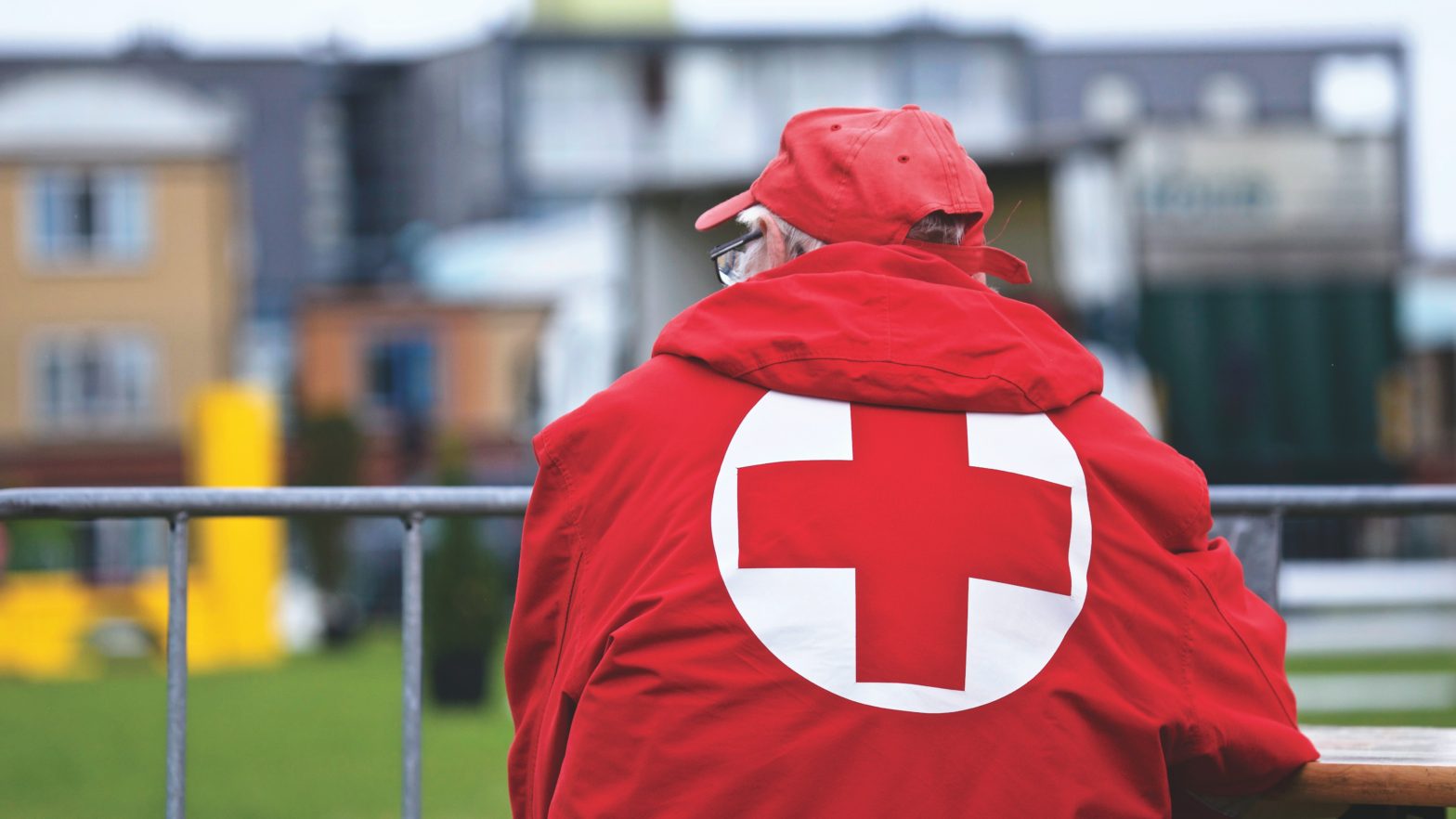Born from Australian Red Cross’ innovation program, Humanitech, which aims to place humanity at the centre of technology, Traverse was a social enterprise start-up whose aim was to use Web 3.0 technologies to remove the structural barriers between volunteers and volunteering.
Key impact
In less than 3 months, Matt used his design and research expertise to run small, lean, hypothesis-led experiments that ultimately showed the business that the humanitarian sector and the people that work within it are not yet ready for de-centralised technology.
With Matt’s help, The Australian Red Cross saved hundreds of thousands of dollars in technology investment by proving that the described solution is solving a problem that very few people had or were willing to pay for. This meant that those funds could be re-directed towards purposes that were more likely to generate positive social impact. The overall process involved:
- Customer research with volunteers Australia-wide
- Lean business-model canvassing
- Hypothesis testing with webflow funnels
- The systematic elimination of assumptions resulting in a clear decision to no longer explore the technology for it’s intended use.
The problem/solution hypothesis
Volunteering for humanitarian organisations isn’t an easy or fast process. It can take weeks for a volunteer to onboard and have one’s credentials like First Aid Certificates checked etc. Only then can they begin the important work of volunteering. On top of this, every organisation’s volunteering onboarding is disconnected from one another – to volunteer for the Australian Red Cross and Oxfam, a volunteer needs to prove their identity and credentials twice. This is slow and cumbersome for everyone involved.
So, what if there was a way for volunteers to have cross-organisational credentials issued and verified by any humanitarian organisation?
The hypothesis? By leveraging de-centralised (blockchain) technology to issue, send, and store volunteer credentials, organisations will be able to onboard volunteers more efficiently, and with greater trust across the sector thus unlocking greater volunteer movement and participation across the whole sector.
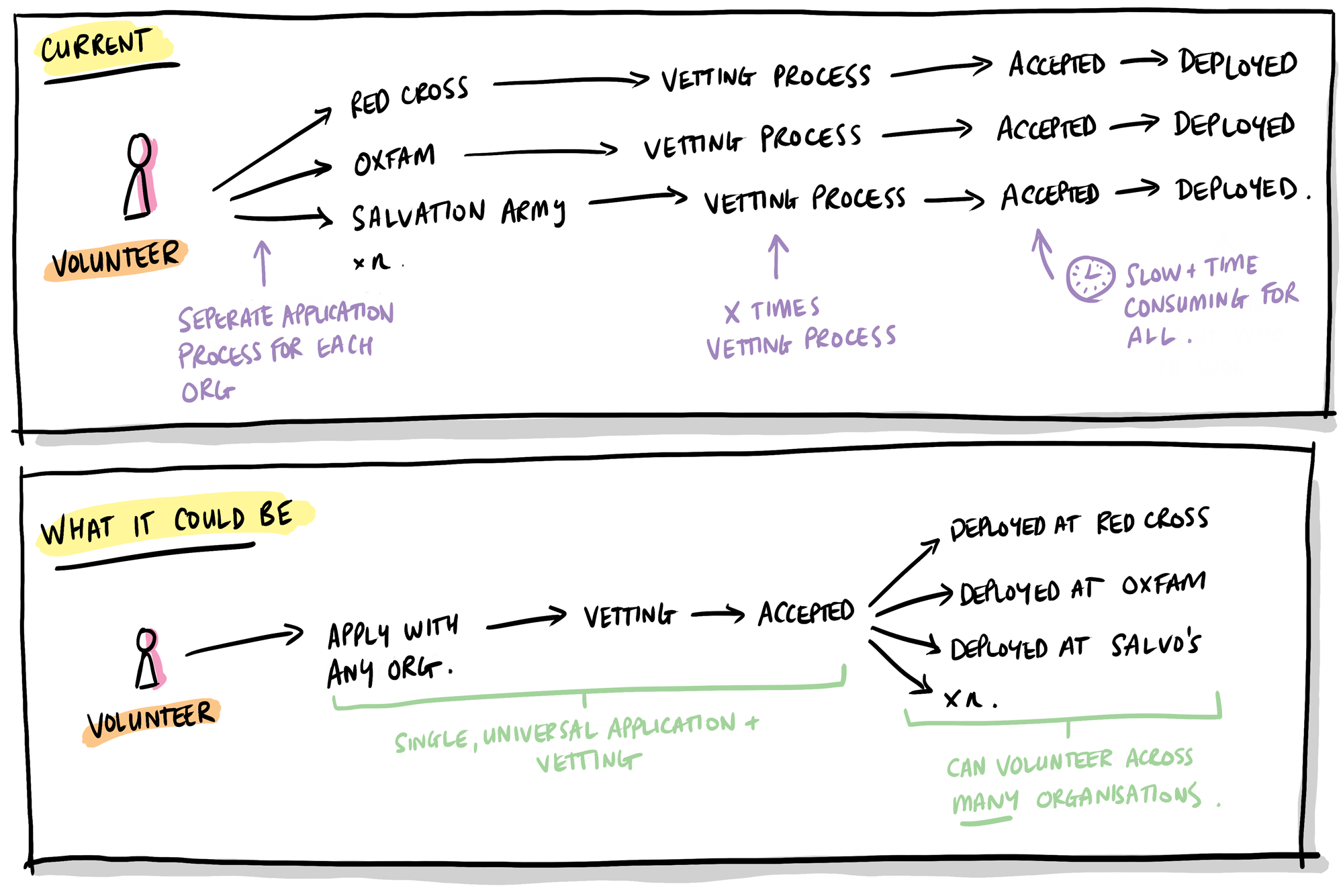
The approach
Leveraging Matt’s deep research and design strategy experience, the Traverse team worked together to carry out a systematic approach to validating or invalidating the hypothesis.
- User interviews with volunteers to understand why they volunteer, the process for being vetted, and how they share, store, and manage their credentials.
- User interviews with volunteer managers to understand how and why they vet volunteer candidates, and the difficulties with a sector-wide approach to doing so
- Mapping the results of the interviews to a Lean Canvas to articulate clear value propositions and unpick the riskiest assumptions of the organisation’s hypotheses
- Behavioural research using Webflow to validate the research uncovered in the interviews and iteratively learn about which problem/solution statements resonate with inbound audiences (and whether a revenue model could sustain the service).
Lean foundational research
Volunteers aren’t ready for Web 3.0
Most volunteers store their precious documents in two ways: in a folder in a draw in their house, or, if they have digital copies, somewhere in a cloud service. The idea of a de-centralised, blockchain-based solution to storing their credentials was met with fear and uncertainty. De-centralised technology does not currently match a volunteers’ mental model of the ubiquity of access to their digital records and they certainly wouldn’t pay for the ‘privilege’ of being fully in control and responsible for their credentials. In fact, they, like most of us, are happy to pay a cloud storage company to keep hold of it for them.
Volunteer managers like to do their own training and vetting
Talk to two different organisations and they’ll tell you that their First Aid Training is the best. As it turns out, fighting fires in the deserts of Western Australia need very different skills to those required for fighting fires in the bushland of Victoria – even though, technically, the credentials received for this style of training are the same, nationally accredited ones. The deeper we dug, the more we understood the nuances that exist within the training and vetting process – something that desktop research did not reveal. Blockchain as a suitable technology would not overcome these nuances alone.
Mapping problems to people and changing ambition
With some very clear foundational research insight, the team revised and re-scoped the initial hypothesis. What was left was a much clearer problem/solution fit. But, would it be compelling enough for enough people willing to pay enough to sustain the service long-term (aka Product/Market fit)?
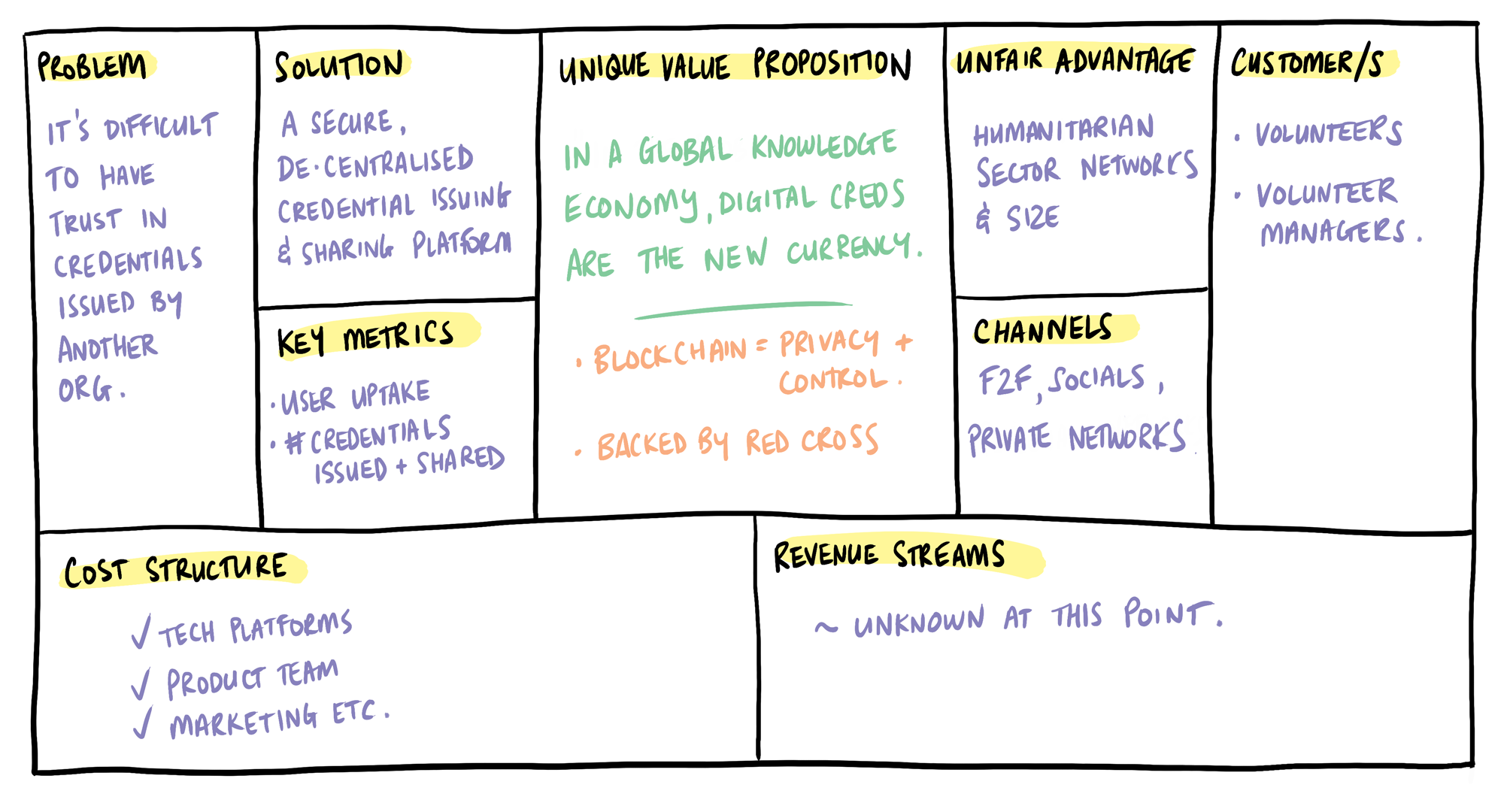
What people say and do are different
Having understood what people said were the barriers, it was important for us to validate them using behavioural research methods. For this, Matt spun up a webflow website that aimed to articulate the solution to the problems that we knew existed.
Designed, built, & copy-written within a day, the Webflow website was launched within 24 hours and hooked up to Google Analytics so the team could get visibility on visitors behaviour.
Within 48 hours, the team had their first inbound customer.
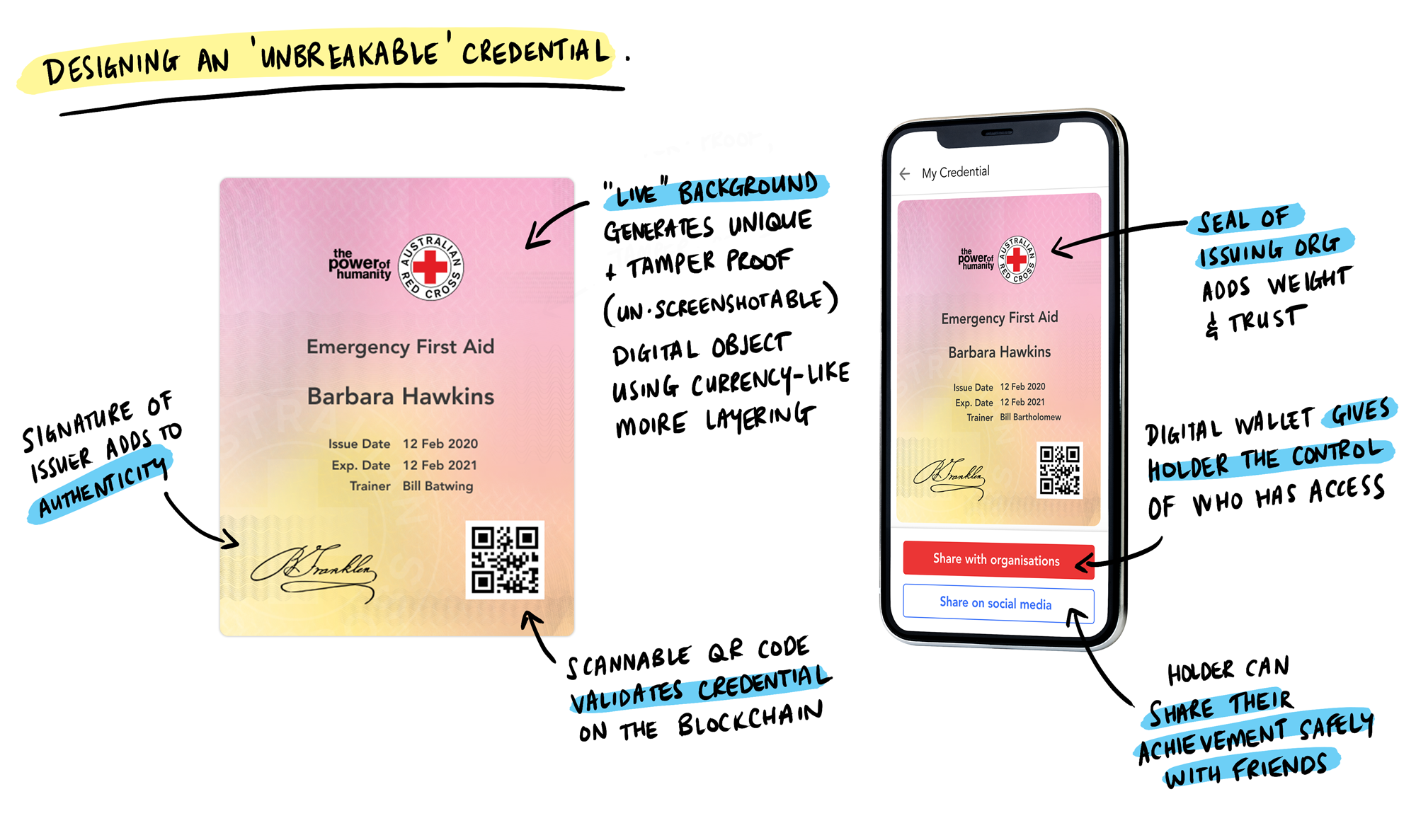
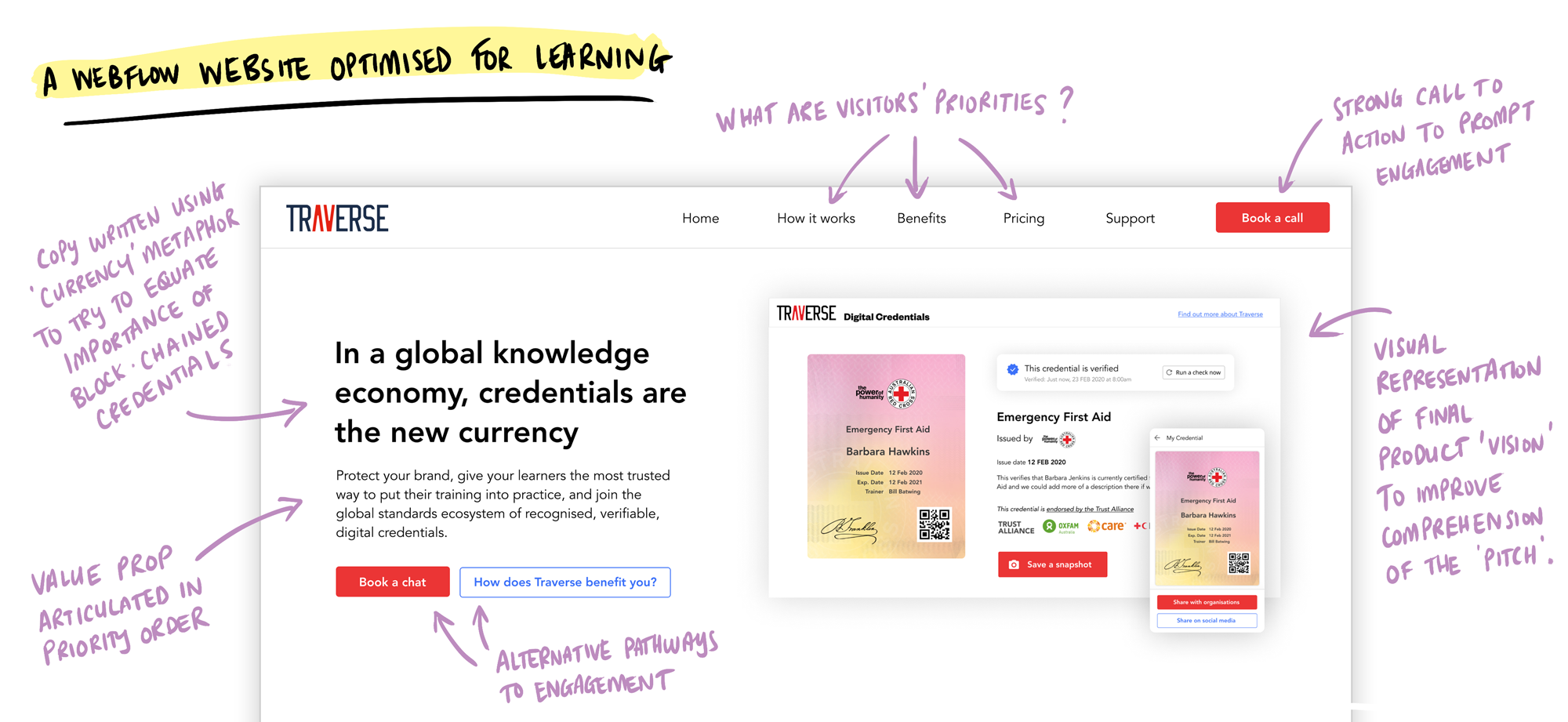
Problem/Solution fit is not enough
Whilst Matt and the team were able to make efficient progress towards validating and invalidating the original hypothesis, the goal of any small business is to be self-sustaining. And, with the new problem articulated, some commercial modelling showed very clearly that the market size, and potential pricing model for the sector, was not going to be big enough to support the team beyond the funding that the Australian Red Cross had allocated to the project.
What happens next?
Although not as glamourous, saving money (especially in the humanitarian sector) is just as valuable as generating it. And, like many tech-led innovation projects before them, Traverse no longer exists. At the time of writing, Humanitech are re-grouping and continuing their research in to how they may use cutting edge technology for good, and now, because of this work with Traverse, they can deploy their saved capital to new, different initiatives that may have bigger and broader positive social impact.
